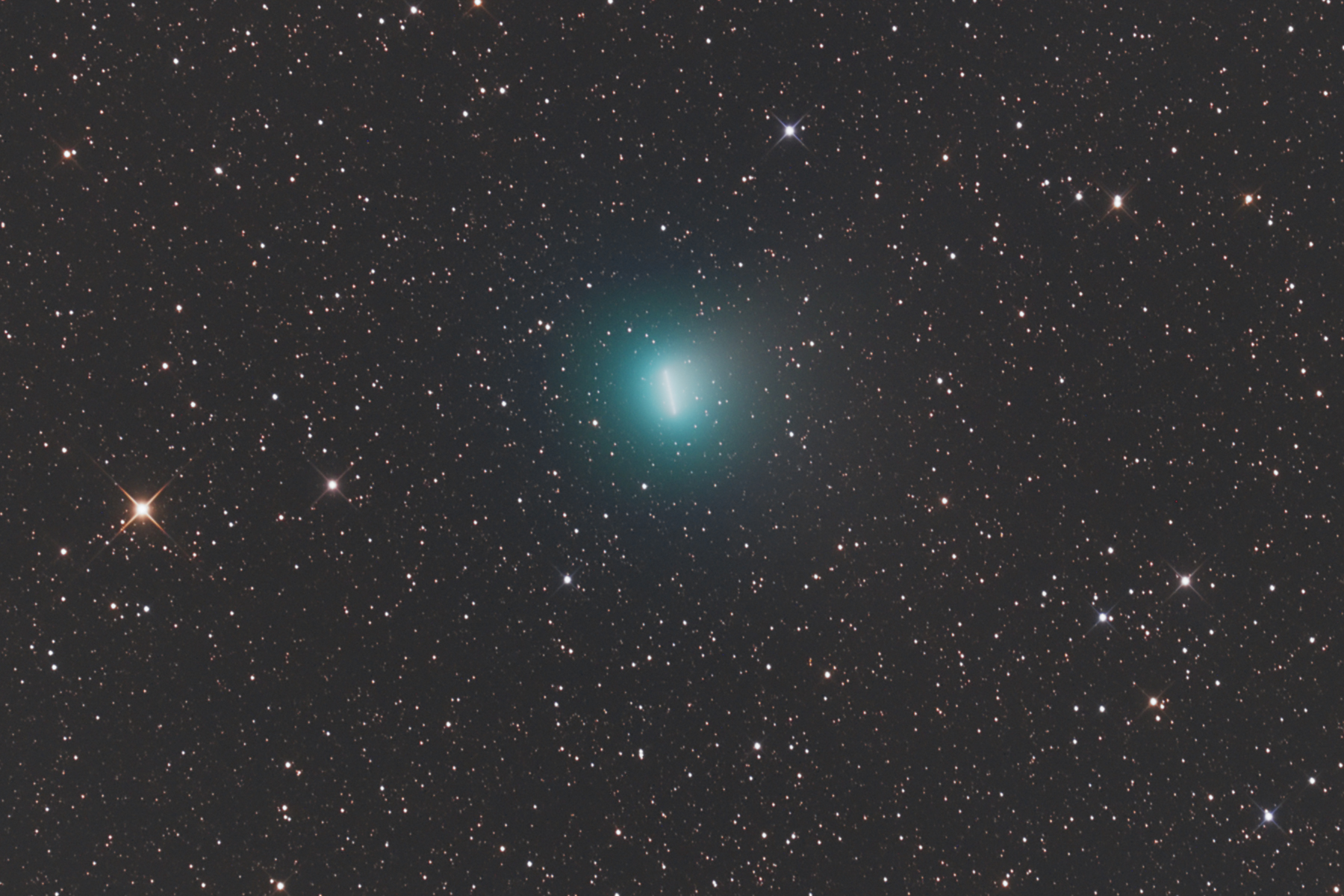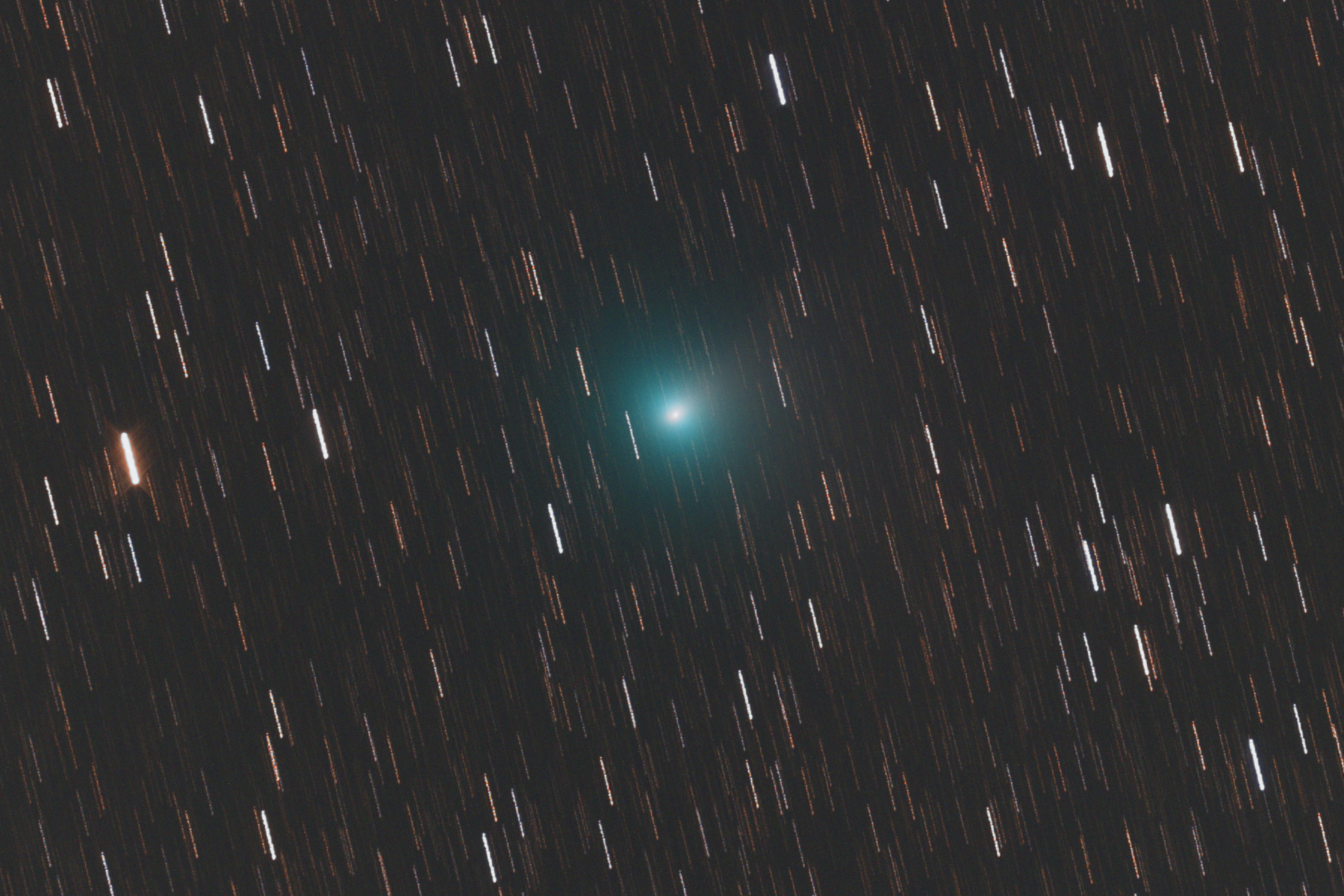Comets don't like behaving like the other objects in the night sky. They don't necessarily move from east to west and appear a little further west each night like the stars do. Even the planets, and their sometimes "wandering" retrograde paths, are well-behaved compared to comets.
Here's a newly discovered comet (more info) with a catchy name of C/2014 E2 Jacques. Shown here are 2 different views of the same comet.
In the first image, the telescope tracked the background stars. This makes it apparent that the comet isn't moving like the stars are. On this night (August 22, 2014) the comet was approximately 50 million miles from Earth and speeding through the solar system at about 85,000 miles per hour. So it's motion is obvious when compared to the stars which are all much, much, much further away from us.
The second image also makes the comet's motion apparent but this time by tracking the comet itself, the stars become streaked.
Here's a newly discovered comet (more info) with a catchy name of C/2014 E2 Jacques. Shown here are 2 different views of the same comet.
In the first image, the telescope tracked the background stars. This makes it apparent that the comet isn't moving like the stars are. On this night (August 22, 2014) the comet was approximately 50 million miles from Earth and speeding through the solar system at about 85,000 miles per hour. So it's motion is obvious when compared to the stars which are all much, much, much further away from us.
The second image also makes the comet's motion apparent but this time by tracking the comet itself, the stars become streaked.
 |
| Comet C/2014 E2 Jacques Its nucleus creates a short line as it moves relative to the background stars in this 15-minute image. AG Optical 10" f/3.8 Newtonian and FLI ML11002-C camera. |

Love this pictures Daniel.
ReplyDelete